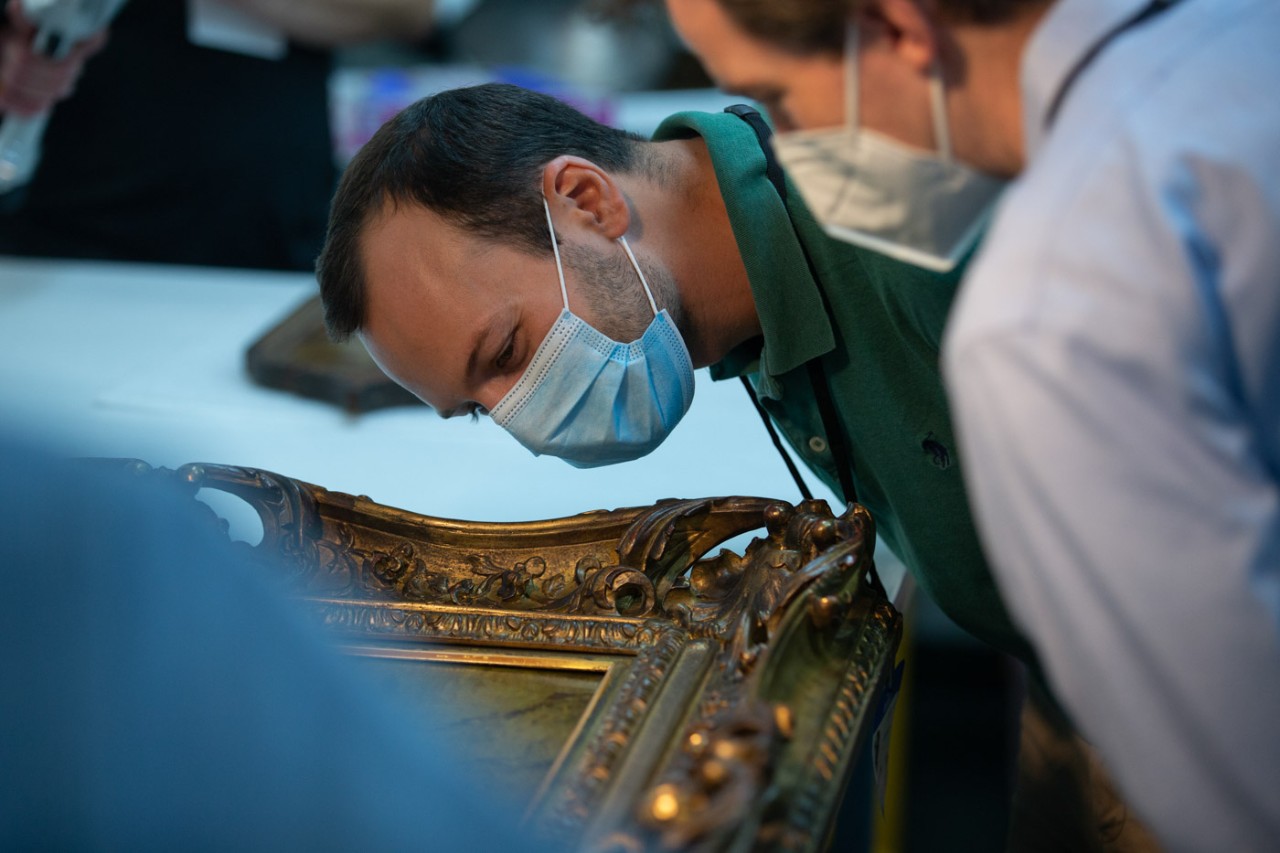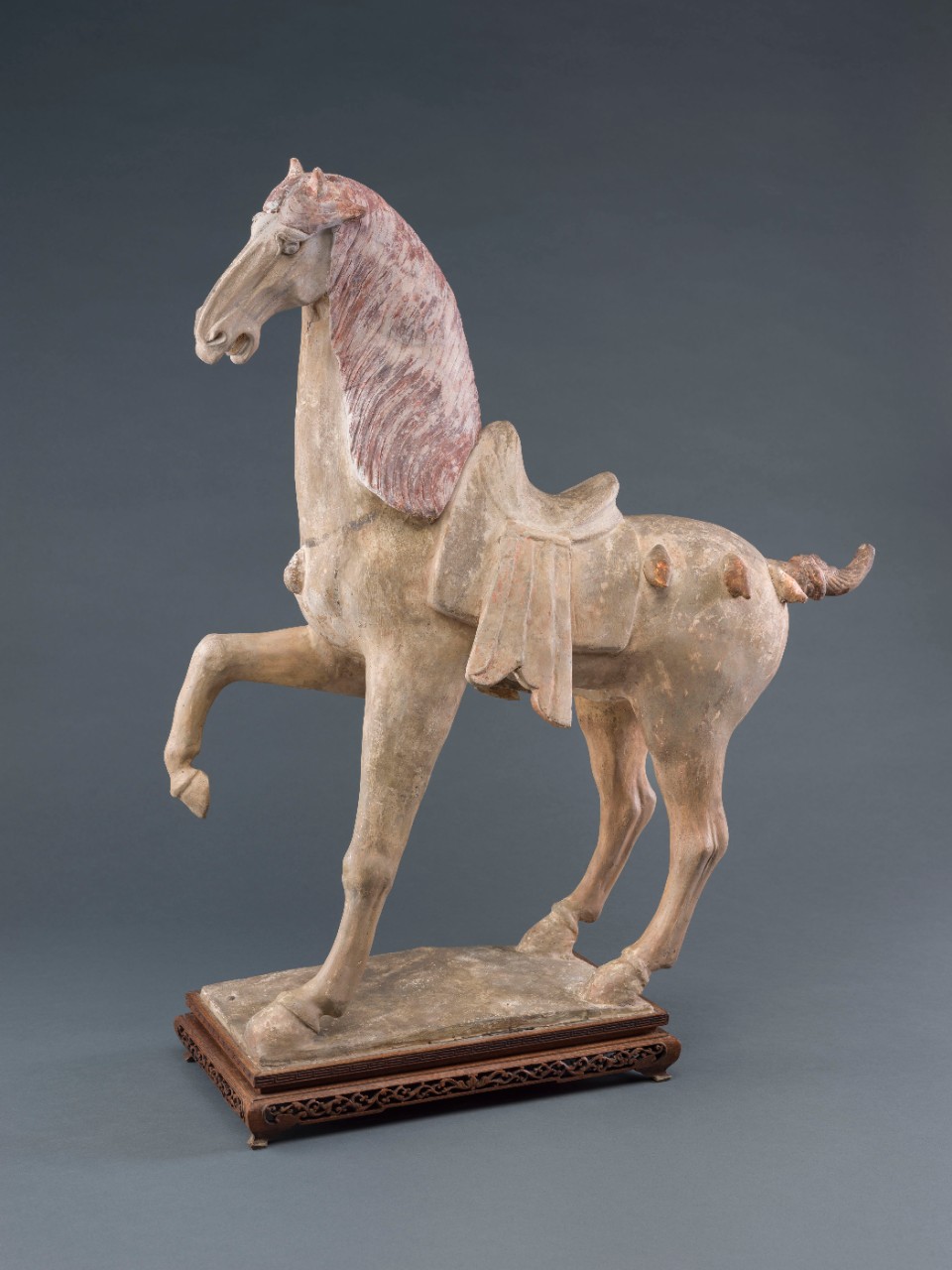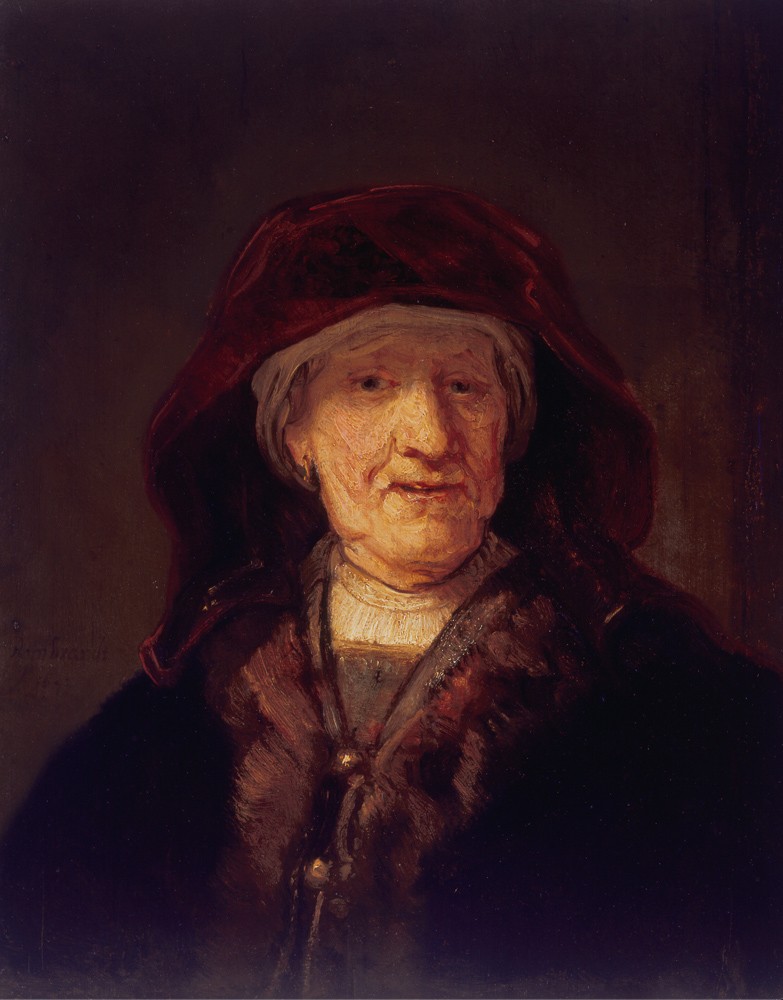
WVXU: Uncovering truth behind art forgeries
UC scientists, art historians work with museums to ferret out fakes
WVXU and Cincinnati Edition highlighted a collaboration between the University of Cincinnati and area museums using science to answer puzzling questions about art masterpieces.

An exhibit at the Cincinnati Art Museum features a Tang dynasty earthenware sculpture of a dancing horse that dates back to 609-907 CE. Photo/Cincinnati Museum Center/Gift of Carl and Eleanor Strauss, 1997
WVXU spoke to Cincinnati Art Museum East Asian art curator Hou-mei Sung and conservator Kelly Rectenwald about how UC chemists were able to answer questions about a 1,300-year-old Chinese dancing horse sculpture.
UC College of Arts and Sciences assistant professor of chemistry Pietro Strobbia and his colleagues at the Institute of Heritage Science in Italy used tiny samples of the terra cotta horse to determine that a suspicious tassel on the horse's forehead was made of plaster and added at some later date than its creation.
The museum removed the tassel from the piece in keeping with what its experts knew about similar pieces.
"A lot of people were calling it a unicorn because it looked like this horn on top of the head, which was very unusual for this type of statue," Rectenwald told WVXU.

The Taft Museum of Art exhibit Fakes, Forgeries and Followers opening Oct. 22 features this painting, An Elderly Woman, by a follower of Rembrandt van Rijn from the mid-1600s. (Oil on panel. Bequest of Charles Phelps Taft and Anna Sinton Taft, 1931.402)
UC also worked with experts at the Taft Museum of Art to examine paintings for its upcoming exhibition Fakes, Forgeries and Followers from the Taft Collection that runs from Oct. 22-Feb.5.
UC College of Arts and Sciences postdoctoral fellow of chemistry Lyndsay Kissel told WVXU's Cincinnati Edition that art historians can learn more about the age of a painting from a chemical analysis of its pigments. Chromium pigments, for example, are a 20th century invention, she said.
Art historian Christopher Platts, an assistant professor in UC's College of Design, Architecture, Art, and Planning, told Cincinnati Edition he is planning a small exhibition of Renaissance and Baroque paintings from UC's art collection. Some of these are 19th or 20th century forgeries or imitations that UC researchers examined.
"The great thing about a teaching institution or teaching museum as opposed to a large public museum is you can put forgeries or fakes on display for pedagogical reasons," Platts told Cincinnati Edition. "In my courses on Renaissance and Baroque art, we'll talk about the stylistic differences and connoisseurship and actually do a demonstration of the scientific examination of art with our whole research group using those instruments."
Listen to WVXU's story about how UC helped solve the mystery of the Dancing Horse.
Featured image at top: UC assistant professor of chemistry Pietro Strobbia and postdoctoral research Lyndsay Kissel examine a painting in the conservator lab of the Taft Museum of Art. Photo/Andrew Higley/UC Marketing + Brand
Related Stories
UC‘s College of Arts and Sciences taps innovative new leadership
December 20, 2023
The College of Arts and Sciences announced Ryan J. White and Rina Williams as the newest divisional deans of Natural Sciences and Social Sciences. White and Kennedy’s inclusion will bring new focuses and structure around student success and the college of Arts and Sciences’ advancement. Both will officially begin their new terms on Jan. 1, 2024.
What is UC’s 4 + 1 program?
December 4, 2023
You may be a UC student thinking about taking your education to the next level — UC’s College of Arts and Sciences has a pathway to help you do just that. A&S has no fewer than 15 five-year programs — from biological sciences to Spanish to psychology — where you can earn both your bachelor’s and master’s degrees in just five years, versus the traditional six-year track. The Bachelors and Master’s 4 + 1 Program is designed to increase your marketability and deepen your understanding of the subject matter. And in an increasingly competitive job market, you may want to investigate an additional year of study.
Clifton Court Hall grand opening garners detailed media coverage
September 20, 2023
The University of Cincinnati celebrated the opening of Clifton Court Hall on Tuesday, Sept. 19, with a ribbon cutting, attended by approximately 200 administrators, faculty, staff and students. The event was covered by multiple media outlets.
